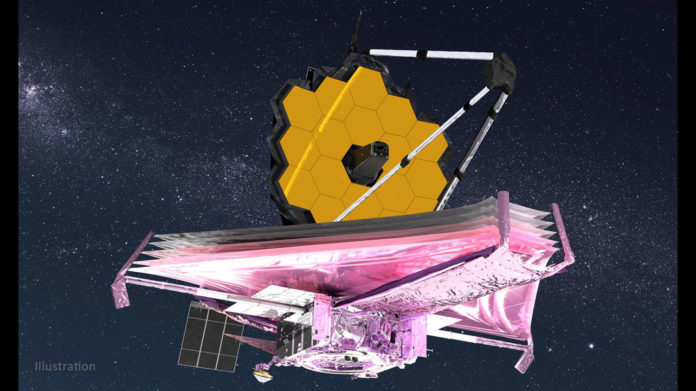The James Webb Space Telescope will find the first galaxies formed in the early universe and peer through dusty clouds to see stars forming planetary systems. To do so, its instrument first needs to go very cold. On April 7, one of its instruments reached an operating temperature below 7 kelvins (minus 447 degrees Fahrenheit, or minus 266 degrees Celsius).
That instrument is Webb’s Mid-Infrared Instrument (MIRI), initially cooled off in the shade of Webb’s tennis-court-size sunshield, dropping to about 90 kelvins (minus 298 F, or minus 183 C). As MIRI’s detectors are different, they need to be at a temperature of less than 7 kelvin to operate appropriately.
This temperature is not possible without a “cryocooler” dedicated to cooling MIRI’s detectors.
Analyn Schneider, project manager for MIRI at NASA‘s Jet Propulsion Laboratory in Southern California, said, “The MIRI cooler team has poured a lot of hard work into developing the procedure for the pinch point. The team was both excited and nervous going into the critical activity. In the end, it was a textbook execution of the procedure, and the cooler performance is even better than expected.”
Webb’s instruments are contained within the Integrated Science Instrument Module (ISIM), the heart of the James Webb Space Telescope. It houses the four main instruments: Near-Infrared Camera, or NIRCam, Near-Infrared Spectrograph, or NIRSpec, Mid-Infrared Instrument, or MIRI and Fine Guidance Sensor/ Near InfraRed Imager and Slitless Spectrograph, or FGS/NIRISS.
All instruments detect infrared light, hence they need to be at a low temperature. Cooling down the four instruments’ detectors and the surrounding hardware suppresses those infrared emissions. MIRI detects longer infrared wavelengths than the other three instruments, which means it needs to be even colder.
Once MIRI reached a frigid 6.4 kelvins, scientists began a series of checks to ensure the detectors were operating as expected.
Mike Ressler, project scientist for MIRI at JPL, said, “We spent years practicing for that moment, running through the commands and checks we did on MIRI. It was like a movie script: Everything we were supposed to do was written down and rehearsed. When the test data rolled in, I was ecstatic to see it looked exactly as expected and that we have a healthy instrument.”
